Note: Last month the foolish founder of Movie Mezzanine made the grave mistake of publishing a halftime report before it was halftime. He deeply apologizes for the editorial faux pau and hopes you enjoy this now timely piece.
…
Come this December every film-oriented website will be publishing a list highlighting a slew of their favorites movies from 2013. That’s why we here at Movie Mezzanine thought it would be worthwhile to take a moment now to reflect on the past five months at the movies.
While I could quite easily decry the state of contemporary cinema (what with the overkill of formulaic sequels, unfunny comedies, abhorrent dramas, etc), today is about celebrating the films that have managed to tap into our hearts and minds, challenged our intellects, and created fictional worlds for us to get lost in. We hope this list of 16* films will compel you to seek out some of these movies that may have passed over your radar upon their release.
As for the folks who aided in constructing this list: Sam Fragoso, Russell Hainline, Kristen Sales, Christopher Runyon, Corey Atad, Jesse Knight, Alexander Huls, Jame Blake Ewing, Danny Bowes, Dan Schindel, Nick Usen, Kevin Ketchum, Alex Withrow, Jake Cole, and Andrew Johnson.
Enjoy!
Special Jury Prize: Behind the Candelabra
Behind the Candelabra is the best movie of 2013 so far. Although the whole “retirement” thing is a bit misleading (Steven Soderbergh isn’t going anywhere in terms of cultural visibility, and do remember the “retirement” referred only to theatrically released features) Behind the Candelabra would read perfectly as a directorial farewell, in particular the spectacular concluding sequence. It’s an immaculately composed work, featuring not only Soderbergh’s florid, theatrical filmmaking but an absolutely splendid cast, from Michael Douglas’ career-best (it’s not even close) performance as Liberace and Matt Damon’s rich portrayal of Liberace’s (much) younger lover Scott Thorson, on down to delightful turns by everyone from Dan Aykroyd to Scott Bakula to Debbie Reynolds (!) to a wounded, subtle, almost silent performance by Cheyenne Jackson that sets up the third act before we’ve even left the first. Don’t let the fact that this didn’t play in theaters throw you off: this is the year’s best. – Bowes (Our full review)
15.) Wrong
Quentin Dupieux’s follow-up to his 2010 killer-tire movie “Rubber” matches that film’s absurdity but retains enough inklings of reality and soulfulness that renders its weirdness incidental. “Wrong” is a story about a man searching for his missing dog first, and a smattering of wildly surreal vignettes second. Jack Plotnick is sublime as Dolph Springer, reacting with appropriate bafflement to a slew of increasingly backwards characters (including a breathlessly hilarious William Fichtner as the mysterious guru Master Chang) and gleefully surreal set pieces that make up an invitingly outlandish alternate universe. – Knight (Our full review)
14.) Blancanieves
Blancanieves is a truly stunning motion picture, the kind of movie that makes you glad the movies exist. One of the most original and charming films of the year, it is an imaginative interpretation of the Snow White fairy tale that combines the visual power of silent cinema with the dramatic force of an orchestral score to create an entirely unique method of storytelling.Unlike the recent rash of fairy tale re-imaginings, Blancanieves isn’t a revisionist retelling of a fairy tale, but more an exploration of the roots of these tales. – Sales (Our full review)
13.) Frances Ha
It’s a cliche to talk about how certain artists are able to “get” things, but the best way to explain the greatness of Frances Ha is to point to how much it gets the current generation. In an age where Time Magazine is running a front page about how the Millennials are all about “me me me,” writer/director Noah Baumbach and writer/star Greta Gerwig demonstrate remarkably astute empathy in how they look at the foibles that mark the twenty-somethings of today. Gerwig’s Frances is a wonderfully funny, sympathetic mess of a protagonist, and any young person wondering where the hell they’re going in life (which includes this writer) will see themselves in her. And the timeless look of the black-and-white cinematography reminds that young people probably always will be awkward, confused, and chaotic. – Schindel (Our full review)
12.) Beyond the Hills
Cristian Mungiu’s criminally overlooked monastery drama Beyond the Hills has a searing intensity that rivals his previous feature 4 Months 3 Weeks and 2 Days. Not just a biting critique on the paranoia of religious establishments and communities, but also a haunting psychological portrait of a woman’s ideals transforming out of pressure from the ideals of others. The performances from Cristina Flutur and Cosmina Stratan are breathtaking, but it is Mungiu’s fly-on-the-wall aesthetic as he simply observes these various lives and viewpoints destroy each other that makes Beyond the Hills such a captivating and harrowing journey into the darkest recesses of both the psyche and the heart, building to an absolutely horrifying climax. It’s something you won’t soon forget. – Runyon (Our full review)
11.) Fast & Furious 6
Like a fine wine that only gets better with age, the Fast and Furious series has inexplicably gotten better with each subsequent film. Furious 6 capitalizes upon the utter insanity and pure spectacle of Fast Five, and somehow finds to be even more absurd. A series whose humble origins began in underground street racing is now firmly centered on the exploits of demigods. Punches are thrown that could incapacitate Thor, and flesh and bone hurtle through the air with only a car’s metal frame to safely break their fall. Fan favorite characters are now action figures in an incredibly expensive sandbox, this is spectacle with the dial turned up to eleven. Coupled with the fact that the Fast and Furious series is now the most densely plotted and intricately linked blockbuster series possibly ever, there is truly something for everyone. Just remember that family is a bond stronger than physics. – Usen (Our full review)
10.) Stoker
Park Chan-wook’s English-language debut has an ostensible plot: something Gothic and overheated about incest, secrets, and its young protagonist’s coming of age. But honestly it’s just an excuse to stage one lethal, sexual set piece after another, entangling texture and color with Clint Mansell’s insinuating score. Few horror movies are as lush, or star an avatar of hysteria like Mia Wasikowska, playing a young woman whose fetishized body and violent leanings are bound together in one knotty performance. Few movies of any stripe are like Stoker, which operates entirely within that space between seduction and terror. – Stoehr (Our full review)
9.) The Place Beyond the Pines
A fractured story of life and death, love and hate, fathers and sons, Derek Cianfrance’s The Place Beyond the Pines is a brutal and honest work of art. The film is split into three very distinct segments, each equipped with their own three-act structure. In the months since the film’s release, many have dedicated time to scrutinizing each segment. This one is better than that one and so on. Fair enough, but that’s not how I choose to look at it. Take one away, and the other two don’t work. At least not as well. Three segments, one movie. One long, unique, oddly beautiful movie. – Withrow (Our full review)
8.) Side Effects
The chameleonic Steven Soderbergh reunites with his Contagion screenwriter Scott Z. Burns for another chilling medical procedural, one that like so many of the directors film’s over the past twenty-four years, refuses to conform to genre or expectation. The films of Alfred Hitchcock are perhaps the most obvious inspiration, and not just because of one shocking, disturbing matter-of-fact moment of violence that sees the film transition from relationship drama to pulpy, paranoid thriller. Jude Law is excellent at the head of a morally ambiguous set of characters, and is a big part of the reason why the film’s underlying question about an over-prescribed society lingers, even when that plotline gets sidelined in the second half. The aesthetic, meanwhile, is as refined as in any Soderbergh picture; the cinematography, softly focused, seems both clinical and ethereal, and combines beautifully with Thomas Newman’s eerie, lulling score. At time it’s almost like we’re slipping ourselves, into some half-real, drug-induced dream. – Clift (Our full review)
7.) Mud
As with any great auteur, Jeff Nichols finds away to reinvent himself as a filmmaker with Mud: a wistful coming-of-age tale discernibly influenced by Huckelberry Finn and the early works of Terrence Malick. Equally artful and thoughtful, Mud is simplistically designed — a story of two pubescent boys who stumble upon a fugitive attempting to rekindle a relationship he once had with his lover. Imbued with élan and humanism from beginning to end, Mud is very much a film about the limitless (often agonizing) power of love – and the great lengths many of us go to find it, obtain it, and ultimately, keep it. – Fragoso (Our full review)
6.) To the Wonder
Terrence Malick’s ostensible tip into self-parody reads to me as closer to autocritique, with the ethereal gestures and cryptic messages passed down from enigmatic director to befuddled cast stripped of their sense of whimsy and transcendence. This is a film about the inherent meaninglessness of those gestures, forcing characters absorbed in lofty, naïve romance to confront the reality of the world. That reality is distorted by the film’s balletic movements, but that only makes its expressive peaks and troughs more resonant. Last time out, Malick made a movie about found self-forgiveness in the ecstasy of the cosmos. To the Wonder turns inward and looks for forgiveness and honesty between others and finds something that brings his cinema close to horror. – Cole (Our full review)
5.) Like Someone In Love
I haven’t come across a film as complex and challenging as this one since Kiarostami’s previous film: Certified Copy. Like Someone in Love examines the illusions of love, the way people try to convince themselves that what they feel is love. The film is also an outright challenge to women’s rights in societies that consider themselves more socially equitable. Throughout the film, Men domineer, control and direct Akiko. Her boss, her boyfriend and even the old man Takashi Watanabe all try to control her. The point is clear: Akiko isn’t free in this society; she is just trapped in a clear prison cell. – Ewing (Our full review)
4.) Stories We Tell
Narrative is the way we relate to the world and to each other. We tell stories to communicate ideas, and to relate the events and emotions we experience. We tell stories to hold on to our memories. Sarah Polley’s new film, Stories We Tell, is an exploration of the functions of narrative as they relate to the telling of our life stories. And while that may sound high-minded and intellectual, what Polley unearths is a well of emotion and one of the most powerful new films I’ve seen in recent memory. – Atad (Our full review)
3.) Upstream Color
It’s tempting to want to solve Upstream Color. Its hypnotic elusiveness makes it difficult to suppress a compulsion to try and comprehend its surreal intrigue – pigs, worms, pools with endless supplies of rocks. But Shane Carruth’s second film isn’t about understanding it, but feeling it. That’s why Upstream Color, despite its other ambitions, is really a resonant film about trauma – not an ageless organism. A desire to find answers is replaced by the overwhelming poignancy of Kris and Jeff’s journey to repair their damages lives and psyches. And in their efforts to engage with their seemingly unexplainable feelings to try and understand what happened to them we discover Carruth’s intent with us. We’re reminded that sometimes it’s not comprehension that can inform us how to feel, but the other way around. Which is why the greatest understanding the film provokes isn’t answers to its mysteries, but an understanding of Kris and Jeff by making us empathize with them. – Huls (Our full review)
2.) Before Midnight
Richard Linklater’s Before Midnight is not only the funniest and saddest entry into the beloved Celine and Jesse Trilogy, it is also the funniest and saddest film I’ve seen in the first half of 2013. From its lengthy one-take opening car ride, jammed with details recognizably hilarious and frustrating to any parent, to its revealing Greek countryside dinner, complete with quiet supporting character work and small intimate moments of self-recognition, Before Midnight wittily executes a slow build towards its final act. It’s not spoiling to say the series goes where life mandates it must, hitting the relationship boiling point with a keen sense of realism and life experience. Anyone who’s been in a lengthy relationship has had one or more of these moments. I can only hope Linklater will give me another opportunity in the future to continue my love affair with these characters. – Hainline (Our full review)
1.) Spring Breakers
Korine’s depiction of youthful debauchery is a mesmerizing satire, somehow managing to celebrate excess while offering a compelling critique of a generation’s spiritual emptiness. Lit with the neon sheen of the Vegas Strip, there’s a cool confidence to the chaos that adds aesthetic and thematic weight to what could easily be a gratuitous mess of flesh and sweat. It’s sleazy yet sleek, featuring what may be the best performance of James Franco’s career, and the dreamlike cinematography by Benoit Debie results in the most hypnotic cinematic experience so far this year. – Johnson (Our full review)
…
What are some of your favorite 2013 films from the past six months?


















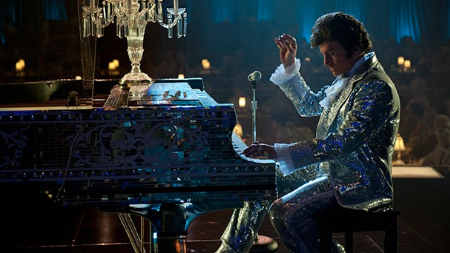
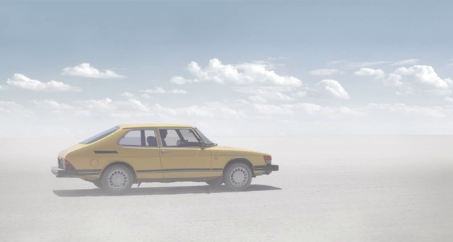


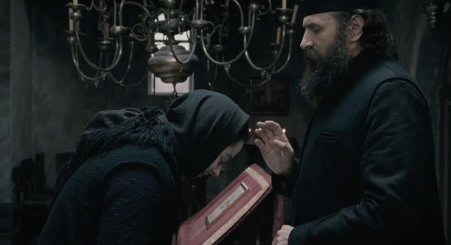





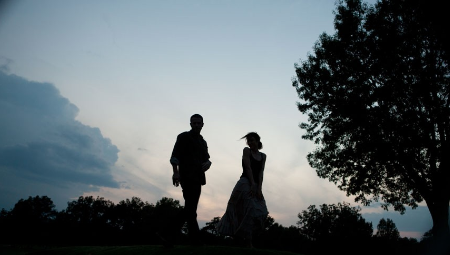



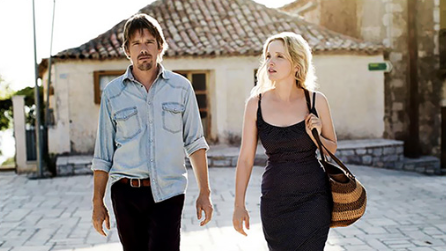




3 thoughts on “The Halftime Report: Our Favorite 15 Films from the Past Six Months At the Movies”
Excellent list, although I lament the lack of Pain & Gain.
Sorry, Brad. Blame Bowes.
I’m kind of surprised and disappointed To The Wonder is so high. I’d have the following additions on mine: Act of Killing, Gebo and the Shadow, Outside Satan, In the House, Post Tenebras Lux. Good to see Beyond the Hills and Before Midnight mentioned. Midnight is one of those movies that reveals more with each viewing, imo.